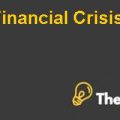European central bank has learned a lot from the events that occurred in the economy during the past seven years and is in the position to reject the two propositions that were made again and again. First proposition is that, Austerity has no lasting negative effects on economic output and second is that when the central bank interest rates close to zero then the monetary policy loses its effectiveness. The monetary policy is still effective at zero interest rates because of several reasons and not all monetary policy worked in the past seven years. The projection of the inflation for ECB in 2015 is at the rate of 1.3 percent and the ECB has inflation target that can be close to or below 2 percent. The inflation targets of ECB are within the reasoned range of outcomes. The view of some ECB’s governing council is that the ECB is expecting to fall short of its own target (Wolfgang Münchau, 12 January 2014).
The President of ECB indicated that the monetary easing will arrive in June and he said that to preserve the Euro; ECB is ready to take action and to raise the inflation to 2 percent. Outright monetary transactions is the condition that is promised by the central bank to purchase the government bonds in the secondary markets; which will result in stopping the panic of inflation rate in the ECB. The investors and the policy makers of ECB think that the crisis is over. The growth rate of nominal GDP depends upon the real rates of growth and inflation. The higher inflation rates will ease the burden of public debt. The vulnerable countries need to improve the competitiveness with core countries either by higher productivity growth or through lower inflation rates (Martin Wolf, 13 may 2014).
The European Central Bank’s balance sheet is shrinking as banks repay their long-term refinancing operation, which keeps the recovery slow and sustains low inflation. The ECB should implement quantities easing by replaying its bank lending programs. Buying government short-term debt that is equivalent with the target of inflation set by the ECB keeps the ECB monetary policy separate from its role under bank’s supervision. Regardless of Europe’s modest recovery of the economy and the low interest rates; the ECB is in problem. However, the ECB top priorities include extension of the recovery of the economy and to avoid deflation. Although, the conditions of European economy is improving gradually but the concern about the negative effects of deflation is there. The aim of ECB is to make the monetary policy that will lift the potential growth to the economy. In aggregate demand, the Europe growth is too slow to enhance the healthy real growth and low inflation. The balance sheet of European Central Bank is shirking and monetary policy is becoming ineffective. The lending of commercial is constrained and the channels of monetary policy are blocked. The quantitative easing program is designed that is consistent with the inflation rate target of 2 percent, increase the liquidity, stimutes aggregate demand and involves a predictable exit policy (Mickey Levy, 16 may 2014).
For quantitative easing, the European Central Bank opens the door for the first time after a decrease in the interest rates, which recodes low that is stimulating economic growth and staving off the threat of deflation by depressing the Euro as part of a package of extraordinary measures. The central banks around the world push the local currency higher. The European Central Bank is becoming the first central bank to have a negative deposit rate by moving into unchartered territory. To lenders €400 billion is also proving up in cheap loans. The European Central Bank is desperate to push the rate of inflation close to 2 percent and stimulate the lending on the periphery of the Euro. High unemployment following the sovereign debt crisis and lack of lending has also affected the fragile Euro zone. The European Central Bank with 2 percent rate of inflation is comfortable. In May, the rate of inflation for the Euro zone is slowed to 0.5 percent even when ECB kept the record low; since the sovereign debt crisis (James Chessell, 6 June, 2014).........................................
This is just a sample partial case solution. Please place the order on the website to order your own originally done case solution.












